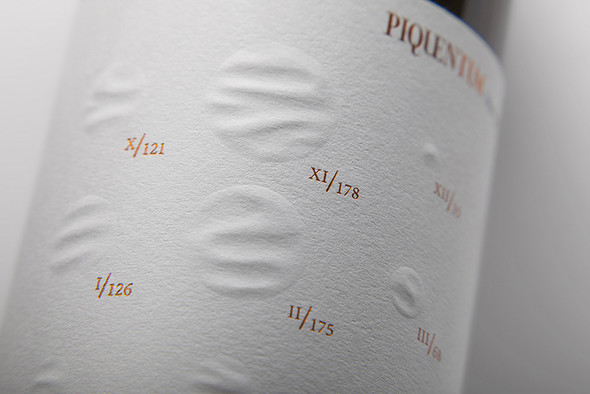One of the most ancient human activities is agriculture. Man cultivating the land has had to fight natural forces since the prehistoric age. Either drought would come, or too much rain, hail or frost, and the crops could also be destroyed by various diseases or pests. All these risks hung like the sword of Damocles over farmers’ heads and the devastating events were, without exception, credited to supernatural forces, gods, spirits, etc controlling the world, taking revenge or simply playing their games.
Nowadays, everyone is talking about terroir. I would not like to elaborate on what it means to me, but water and precipitation (too) have also played a key role in the quality of grapes and the excellence of a given vintage.
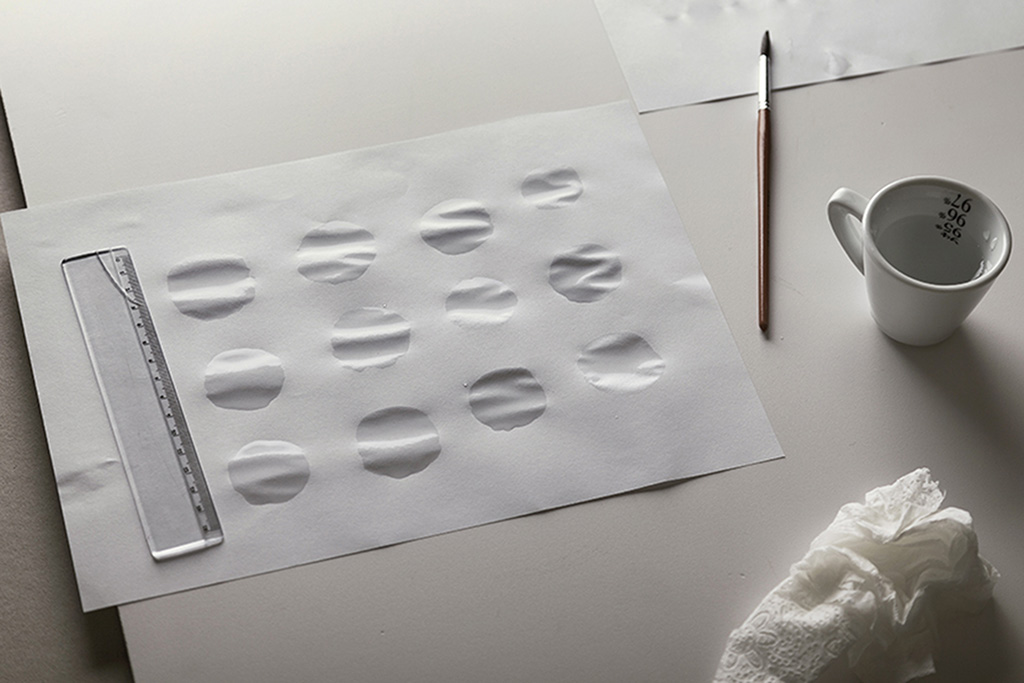
At first sight I did not grasp the meaning of drops in the label, but it was effective because it made me curious, and I would probably spot this minimalist solution if I saw it on a shelf in the shop. Although the idea is simple, it provides consumers with a unique perspective. The vintage must always be displayed on the packaging but why not do this with an educational purpose with a sort of vintage biography? With this solution, you can follow the amount of rain the grape the wine was produced from received throughout the given year.
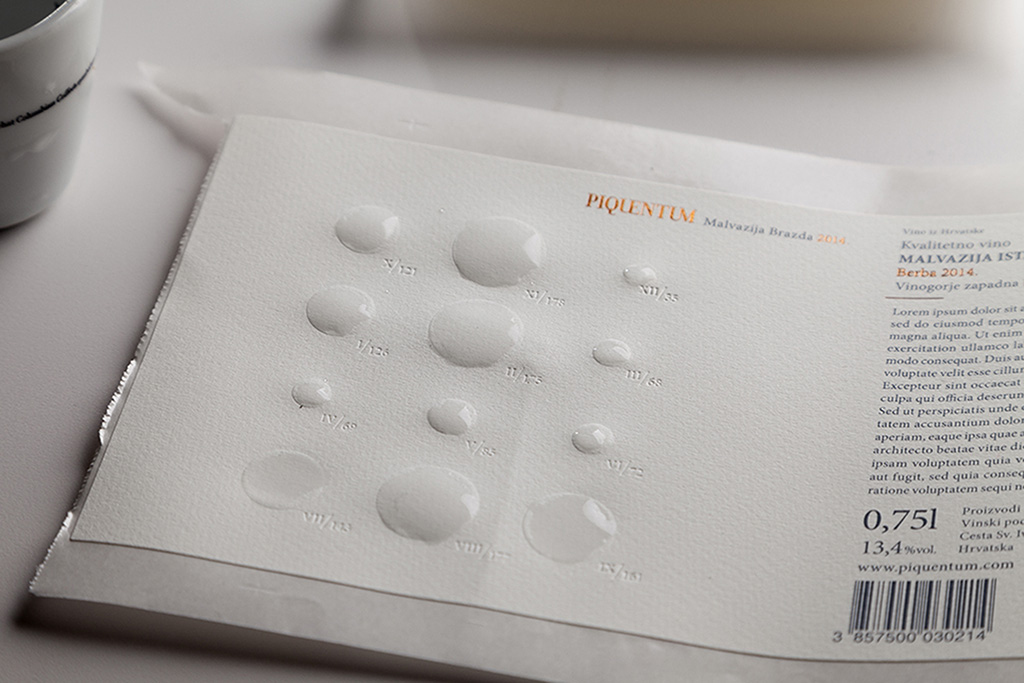
The designers took their task seriously and collaborated with the Croatian Meteorological and Hydrological Service during the making of the label and used the data received to create the exact size of the drops. Precipitation at the right time is a blessing, at the wrong time it spells disaster. Wine lovers with some insider knowledge thus receive a quality certificate together with the label.
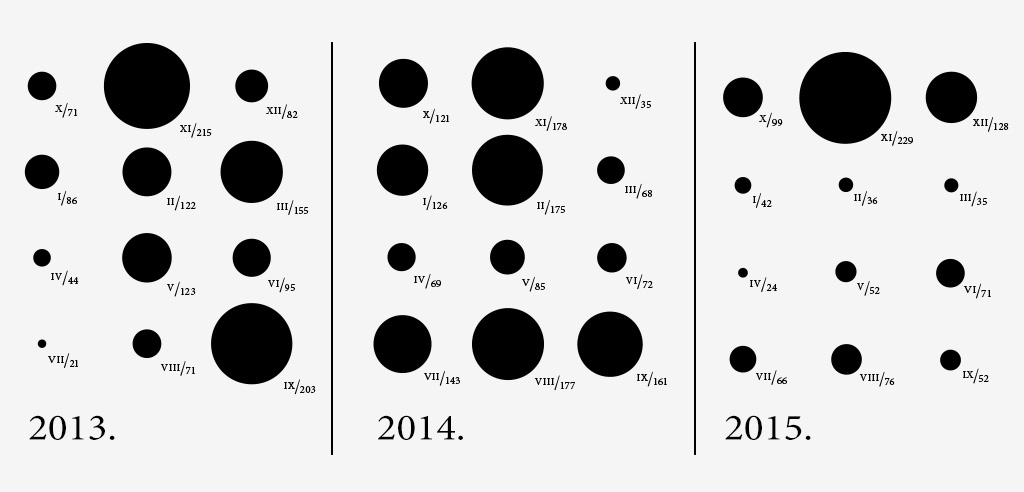
2013 - The label features a moderate year, and that it rained mostly in September, which is when grapes need to achieve the optimum point of maturity. That is why in its flavour the final power of alcohol can be perceived as partially lost and weakened.
2014 - Due to heavy rains throughout the year this wine resulted in much smaller quantities of sugar, so that it reflects a freshness of more northern regions although it is all about Mediterranean vineyards. However, considering the constant rainfall, flavours are naturally balanced.
2015 - It will be remembered as one of the most successful years in the production of wine. Warm and dry both spring and summer, with an ideal quantity of rainfall in autumn, so that vines did not suffered drought. An optimum maturity was achieved and the result is a powerful, full-bodied Mediterranean wine.
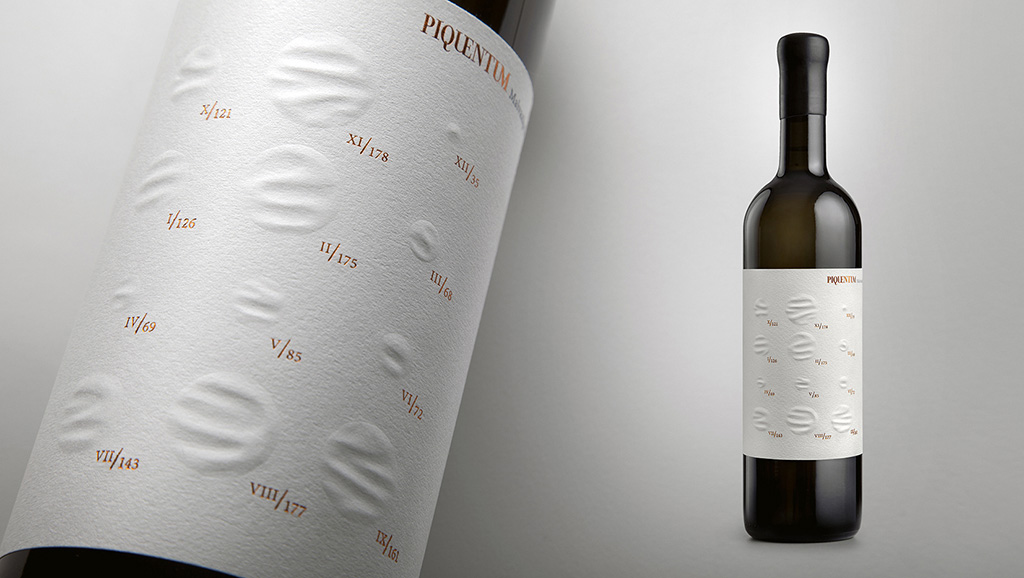
This label passes on promptly what the year was like, so that we can easily compare the different vintage years. The label, as a reflection of the year during which the wine was made, wants to encourage thinking and discussion. In such a way, wine, as one of the historically most acclaimed products, becomes a medium that speaks out about the importance of understanding Nature.
Designed by Studio Sonda



